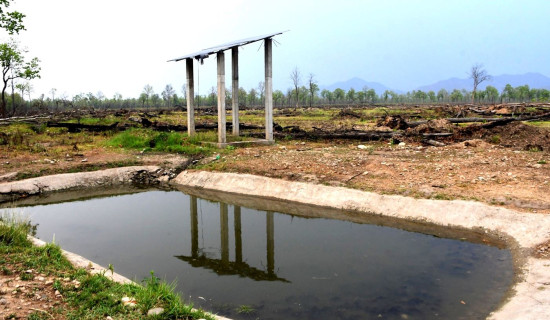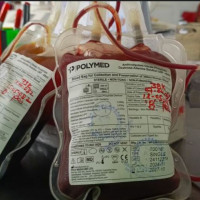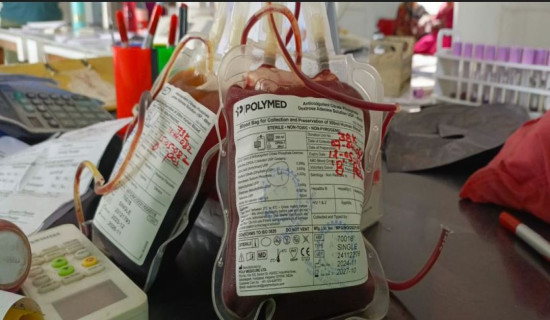- Thursday, 31 July 2025
Food Safety: A Scientific Path To Wellness
There is no sincerer love than the love of food” a famous quote by George Bernard Shaw rightfully reflects the intangible association of human emotions around food. While food value is generally associated with nutritive and therapeutic importance, it serves larger societal roles. One cannot deny the substantial role of a wholesome meal in uplifting the psychological state of mind. Interestingly, a satisfying meal is known to boost happy hormones like Dopamine, Serotonin and Endorphins in the human body. Food is thus central to overall wellness. However, a crucial underlying factor that impacts its sanctity is food safety.
Food generally becomes unfit for consumption whenever a contaminant is introduced or if it is exposed to unfavourable environment that impairs its composition. Repercussions usually manifest in illnesses that derail human capacity to utilise nutrients in food. The socioeconomic strata may be hampered as health and economic activity is directly impacted. World Health Organisation (WHO) relates the illness of 600 million people and death of 4,20,000 people annually to unsafe food. Each year on June 7th, WHO and Food and Agricultural Organisation (FAO) of the United Nations jointly spearheads the commemoration of World Food Safety. The theme this year “Food Safety: science in action” highlights the crucial needs to understand the role of science in food safety.
Science behind food
How often have we reflected upon the science behind food and its spoilage? Food is a natural amalgamation of organic and inorganic components that include water, carbohydrates, fats, protein, minerals, vitamins, etc. Each food is a pristine creation, its composition uniquely designated by nature to heal. Any form of contamination degrades this value.
Physical, chemical or microbial hazards singly or in combination deteriorates food. While physical hazards that do not generally disrupt intactness of food, it may be life threatening. This includes extraneous matters like hairs, straw, glass, stones, to name a few. Unregulated introduction of any chemicals in the form of artificial colour, flavour, preservatives, emulsifiers, acid regulator etc. in food is harmful. Impact ranges from gastrointestinal discomfort to vital organ failure. Formation of intoxicants in food due to microbial contamination may be fatal. For example, peanut is associated with aflatoxin, a carcinogenic metabolite of the genus of fungi known as Aspergillus. Likewise, cancer precursors like heterocyclic amines (HCAs) and polycyclic aromatic hydrocarbons (PAHs) may be formed when cured meat that contain nitrates salts are exposed to high temperatures for long time as in barbecuing, grilling and frying.
While physical and chemical spoilage of food can be controlled to a large extent by stringent compliance to standard protocols, controlling microbial spoilage has always been an arduous challenge as microbes are inconspicuous yet very prevalent. Here, deterioration starts with a gradual loss in the natural balance of nutrients resulting in physical disintegration along with off odour, discoloration and bad taste. Food being a nourishing entity in itself, is very susceptible to undesirable microbial growth, the most common form of unsafe food. Unravelling the science behind this integrity is an important step towards understanding food spoilage.
Food characteristics largely determine the type of invading organisms. Bacteria normally survive in a neutral to slightly acidic environment rich in nutrients, including oxygen and moisture. Hence, food like milk, water, soups, and slurries are often prone to bacterial proliferation. Yeast and mold grow at a broad range of acidity, but particularly thrive in neutral to slightly acidic conditions. It usually flourishes in the presence of oxygen and can survive through a broad range of temperatures from 0 degrees Celsius to 50 degrees Celsius. Hence, undesirable yeast and mold usually inhabit low moisture food like grains, powders, dried fruit and vegetables, baked goods, yoghurt, and concentrates.
A classic scientific illustration of microbial spoilage can be seen in milk. When milk leaves the udder of a healthy cow, it contains a few hundred colony-forming units (CFU) of lactic acid bacteria per gram, which plays an important role in its natural preservation and fermentation. Milk normally has an acidity of 0.14-0.16 per cent as lactic acid. If not boiled and consumed immediately, it needs to be chilled and stored hygienically. Otherwise, microbial contamination and growth occur, resulting in the splitting of milk.
Transportation to processing plants would require insulation or refrigeration. If sterilised and aseptically packaged, milk wouldn’t contain any microbes, hence it can be stored at room temperature. However, while pasteurised, milk would be free of pathogens but would still contain a nominal microbial load, hence it has to be stored in a cold chain throughout distribution until the point of consumption. The acceptable Standard Plate Count of pasteurised milk is limited to 50,000 CFU per gram in Nepal.
Food safety
Any food if unsafe cannot be deemed a food. When the goodness of food is masked, nutrients cannot be effectively assimilated by the human body. Food safety, hence, impacts bioavailability of nutrients at large and so is a prime quotient in nutrition advocacy. As food choices change, consumers need to be more mindful of their habits.
With food industries adopting novel innovations like fortification, genetic engineering, biotechnology, food printing and microencapsulation, regulatory mechanisms need to be more stringent than ever. The processor’s role in ensuring product conformance to applicable microbial standards, levels of trans fat, and rancidity levels is crucial. The enforcement of Food Hygiene and Quality Act, 2081 BS that replaces the Food Act 2023 BS can be marked as exemplary commitment towards food safety in Nepal. Collaborative role of stakeholders is the way forward. It’s time we all strive to understand the basic science behind food safety, so that food can be handled in way that best conserves its values.
(The author is a Food Technologist: monicakpg@yahoo.com).















